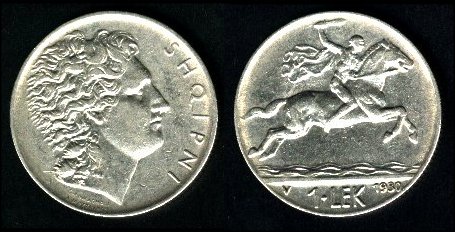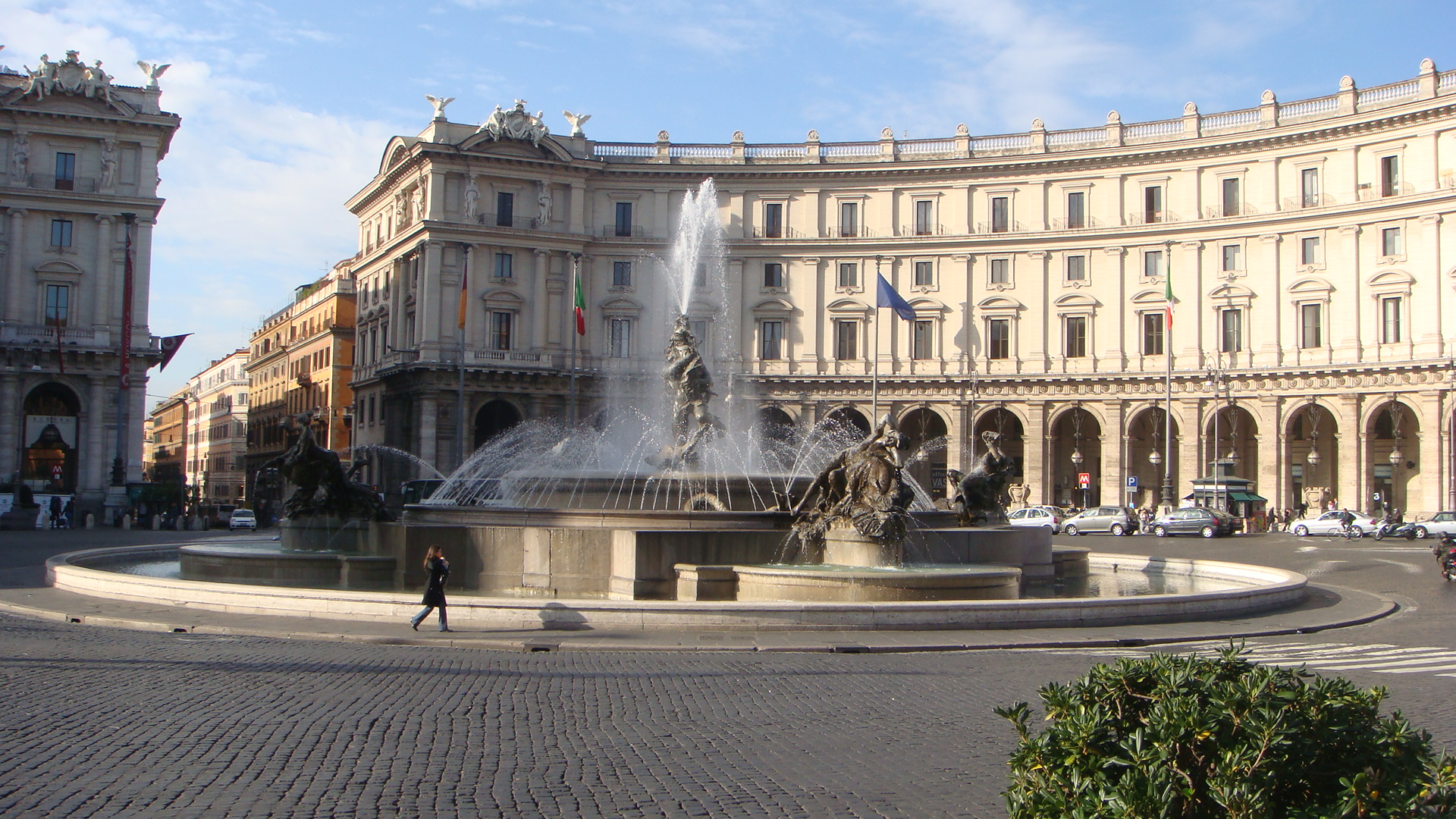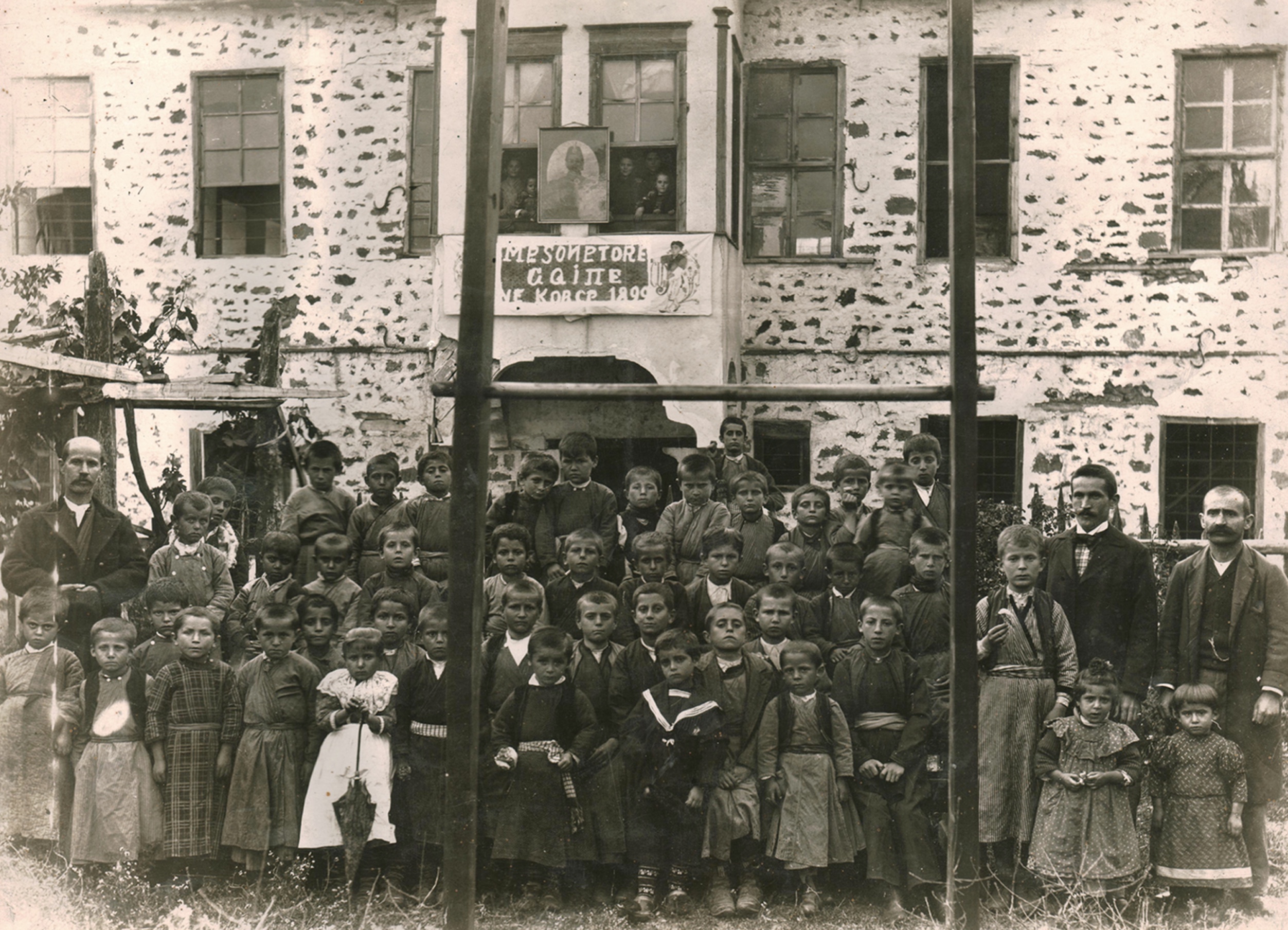|
Albanian Lek
The lek (; indefinite singular ''lek'', definite plural ''lekët'', indefinite plural ''lekë''; Currency symbol, sign: L; ISO 4217, code: ALL) is the currency of Albania. Historically, it was subdivided into 100 ''qintars'' (; singular ''qindarkë''). History The lek was introduced as the first Albanian currency in February 1926. Before then, Albania was a country without a currency, using a gold standard to fix commercial values. Before the First World War, the Ottoman Turkish piastre was in full circulation. During the occupation of Albania by Austria-Hungary, paper notes of the Austro-Hungarian krone were imposed on the population. Albanians were reluctant to use these notes and only did so in exchanges with the occupiers. The majority of the population used gold and silver piastres, or gave up on money altogether and bartered instead. In 1923 Italian paper circulated at Shkodër, Durrës, Vlorë, and Gjirokastër, and the Modern drachma, Greek drachma at Korçë, the valu ... [...More Info...] [...Related Items...] OR: [Wikipedia] [Google] [Baidu] |
Bank Of Albania
The Bank of Albania () is the central bank of Albania, issuing the Albanian lek. It is headquartered in Tirana, with five branches in Shkodër, Elbasan, Gjirokastër, Korçë and Lushnjë, and a Research and Training Center in Berat. The bank was founded in 1925 in Rome as the National Bank of Albania (, , Albanian acronym BKS or BKSH), replaced in 1945 by the state-owned Albanian State Bank based in Tirana (, BSS or BSHSH), before adopting its current name in 1992. History Background In the first few years following Albanian Declaration of Independence, Albania's declaration of independence on 28 December 1912, the fledgling country lacked a central bank, and several attempts to create one were unsuccessful. Under Ismail Qemali's leadership, a first "National Bank of Albania" was created on , whose construct was dominated by foreign banks such as the Austrian Wiener Bankverein and the Banca Commerciale Italiana. The backlash against that foreign domination triggered a revolt i ... [...More Info...] [...Related Items...] OR: [Wikipedia] [Google] [Baidu] |
Korçë
Korçë (; sq-definite, Korça) is the List of cities and towns in Albania, eighth most populous city of Albania and the seat of Korçë County and Korçë Municipality. The total population of the city is 51,152 and 75,994 of Korçë municipality (2011 census), in a total area of . It stands on a plateau some Above mean sea level, above sea level, surrounded by the Morava Mountains. The area of the Old Bazaar of Korçë, Old Bazaar, including Mirahori Mosque, Korçë, Mirahori Mosque, is considered as the urban core of the city. Founded by the local Ottoman Empire, Ottoman Albanians, Albanian nobleman Iljaz Bej Mirahori, Ilias Bey Mirahori, the urban area of Korçë dates back to the late 15th century and the beginning of the 16th century, however its actual physiognomy was realized in the 19th century, during a period that corresponds with the rapid growth and development of the city. The Old Bazaar has played a dominant role in Albania's market history. Korçë is the larges ... [...More Info...] [...Related Items...] OR: [Wikipedia] [Google] [Baidu] |
Franga
The franga is an obsolete unit of currency, equal to 5 lek, used in the Albanian Republic and Albanian Kingdom under Zogu. Coins denominated in Franga were in use from 1926 until 1939.taxfreegold.co.uk/ about Franga /ref> Coins Between 1926 and 1938, 1, 2, and 5 franga coins were issued in silver (.835 for the two lower values, .900 fine for the five-franga coins), while 10, 20, 50, and 100 franga pieces were minted in gold (. ...[...More Info...] [...Related Items...] OR: [Wikipedia] [Google] [Baidu] |
Cent (currency)
The cent is a monetary unit of many national currencies that equals a hundredth () of the basic monetary unit. The word derives from the Latin , 'hundred'. The cent sign is commonly a simple minuscule (lower case) letter . In North America, the c is crossed by a diagonal or vertical stroke (depending on typeface), yielding the character . The United States one cent coin is generally known by the nickname "penny", alluding to the British coin and unit of that name. Australia ended production of their 1c coin in 1990, New Zealand last produced their 1c coin in 1988, as did Canada in 2012. Some Eurozone countries ended production of the 1 euro cent coin, most recently Slovakia in 2022. Symbol The cent may be represented by the cent sign, written in various ways according to the national convention and font choice. Most commonly seen forms are a minuscule letter ''c'' crossed by a diagonal stroke, a vertical line, a simple ''c'', depending on the currency (''see below' ... [...More Info...] [...Related Items...] OR: [Wikipedia] [Google] [Baidu] |
Centime
Centime (from ) is French language, French for "Cent (currency), cent", and is used in English as the name of the fraction currency in several Francophone countries (including Switzerland, Algeria, Belgium, Morocco and France). In France, the usage of ''centime'' goes back to the introduction of the decimal currency, decimal monetary system under Napoleon. This system aimed at replacing non-decimal fractions of older coins. A five-centime coin was known as a ''sou'', i.e. a Solidus (coin), solidus or shilling. In Francophone Canada of a Canadian dollar is officially known as a ''cent'' (pronounced /sɛnt/) in both English and French. However, in practice, the form of ''cenne'' (pronounced /sɛn/) has completely replaced the official ''cent''. Spoken and written use of the official form ''cent'' in Francophone Canada is exceptionally uncommon. In the Canadian French vernacular ''sou'', ''sou noir'' ( means "black" in French), ''cenne'', and ''cenne noire'' are all widely known ... [...More Info...] [...Related Items...] OR: [Wikipedia] [Google] [Baidu] |
Arabic
Arabic (, , or , ) is a Central Semitic languages, Central Semitic language of the Afroasiatic languages, Afroasiatic language family spoken primarily in the Arab world. The International Organization for Standardization (ISO) assigns language codes to 32 varieties of Arabic, including its standard form of Literary Arabic, known as Modern Standard Arabic, which is derived from Classical Arabic. This distinction exists primarily among Western linguists; Arabic speakers themselves generally do not distinguish between Modern Standard Arabic and Classical Arabic, but rather refer to both as ( "the eloquent Arabic") or simply ' (). Arabic is the List of languages by the number of countries in which they are recognized as an official language, third most widespread official language after English and French, one of six official languages of the United Nations, and the Sacred language, liturgical language of Islam. Arabic is widely taught in schools and universities around the wo ... [...More Info...] [...Related Items...] OR: [Wikipedia] [Google] [Baidu] |
Albanian Language
Albanian (Endonym and exonym, endonym: , , or ) is an Indo-European languages, Indo-European language and the only surviving representative of the Albanoid, Albanoid branch, which belongs to the Paleo-Balkan languages, Paleo-Balkan group. It is the native language of the Albanian people. Standard Albanian is the official language of Albania and Kosovo, and a co-official language in North Macedonia and Montenegro, where it is the primary language of significant Albanian minority communities. Albanian is recognized as a minority language in Italy, Croatia, Romania, and Serbia. It is also spoken in Greece and by the Albanian diaspora, which is generally concentrated in the Americas, Europe and Oceania. Albanian is estimated to have as many as 7.5 million native speakers. Albanian and other Paleo-Balkan languages had their formative core in the Balkans after the Indo-European migrations in the region. Albanian in antiquity is often thought to have been an Illyrian language for ob ... [...More Info...] [...Related Items...] OR: [Wikipedia] [Google] [Baidu] |
Parliament Of Albania
The Parliament of Albania () or Kuvendi is the unicameral representative body of the citizens of the Republic of Albania; it is Albania's legislature. The Parliament is composed of no less than 140 members elected to a four-year term on the basis of direct, universal, periodic and equal suffrage by secret ballot. The Parliament is presided over by the Speaker, who is assisted by at least one deputy speaker. The electoral system is based on party-list proportional representation. There are 12 multi-seat constituencies, corresponding to the country's counties. The Parliament's powers are defined by the Constitution of Albania. Among its responsibilities, it has the power to amend the borders of Albania or the Constitution, pass all laws, approve the cabinet, supervise the work of the government, declare war, decide on cessation of hostilities, adopt the state's budgets and approve the state's accounts. Other duties include calling referendums, performing elections and appointm ... [...More Info...] [...Related Items...] OR: [Wikipedia] [Google] [Baidu] |
Panorama (Albania)
''Gazeta Panorama'' is a newspaper published in Albania. Published by Panorama, it is the largest newspaper in the country and its online portal/website is the most visited website in Albanian territory. Content Sections The newspaper is organised in three sections, including the magazine. # News: Includes International, National, Tirana, Politics, Business, Technology, Science, Health, Sports, Education. # Opinion: Includes Editorials, Op-Ed An op-ed, short for "opposite the editorial page," is a type of written prose commonly found in newspapers, magazines, and online publications. They usually represent a writer's strong and focused opinion on an issue of relevance to a targeted a ...s. # Features: Includes Arts, Movies, Theatre, and Sport. Web presence ''Gazeta Panorama'' has had a web presence since 2004. References External links * http://www.panorama.com.al/ * http://www.panorama.al/ Newspapers published in Albania Albanian-language newspapers {{News ... [...More Info...] [...Related Items...] OR: [Wikipedia] [Google] [Baidu] |
Lekë Dukagjini
Lekë III Dukagjini (1410–1481), mostly known as Lekë Dukagjini, was a 15th-century member of the Albanian nobility, from the Dukagjini family. A contemporary of Skanderbeg, Dukagjini is known for the '' Kanuni i Lekë Dukagjinit'', a code of law instituted among the tribes of northern Albania. Dukagjini is believed to have been born in Lipjan, Kosovo. Biography The Dukagjini Principality stretched from Northern Albania and into modern Kosovo. The western part of Kosovo, sometimes referred to as '' Rrafshi i Dukagjinit or Dukagjin'', takes its name after the Dukagjini family. Until 1444 he was pronoier of Koja Zaharia. He succeeded his father Pal II as ruler of Dukagjini who appeared to have died of apoplexy in 1446. Dukagjini fought under the command of Skanderbeg against the Ottomans within the last two years of Skanderbeg’s rebellion. He also had a strong rivalry between him and Albanian nobleman Lekë Zaharia. The two princes had been in dispute over who shoul ... [...More Info...] [...Related Items...] OR: [Wikipedia] [Google] [Baidu] |
Obverse And Reverse
The obverse and reverse are the two flat faces of coins and some other two-sided objects, including paper money, flags, seals, medals, drawings, old master prints and other works of art, and printed fabrics. In this usage, ''obverse'' means the front face of the object and ''reverse'' means the back face. The obverse of a coin is commonly called ''heads'', because it often depicts the head of a prominent person, and the reverse ''tails''. In numismatics, the abbreviation ''obv.'' is used for ''obverse'',David Sear. ''Greek Imperial Coins and Their Values.'' Spink Books, 1982. p. xxxv. while , )(Jonathan Edwards. ''Catalogue of the Greek and Roman Coins in the Numismatic Collection of Yale College, Volume 2.'' Tuttle, Morehouse & Taylor, 1880. p. 228. and ''rev.''Allen G. Berman. ''Warman's Coins And Paper Money: Identification and Price Guide.'' Penguin, 2008. are used for ''reverse''. Vexillologists use the symbols "normal" for the obverse and "reverse" for the reverse ... [...More Info...] [...Related Items...] OR: [Wikipedia] [Google] [Baidu] |
Alexander The Great
Alexander III of Macedon (; 20/21 July 356 BC – 10/11 June 323 BC), most commonly known as Alexander the Great, was a king of the Ancient Greece, ancient Greek kingdom of Macedonia (ancient kingdom), Macedon. He succeeded his father Philip II of Macedon, Philip II to the throne in 336 BC at the age of 20 and spent most of his ruling years conducting Wars of Alexander the Great, a lengthy military campaign throughout West Asia, Western Asia, Central Asia, parts of South Asia, and ancient Egypt, Egypt. By the age of 30, he had created one of the List of largest empires, largest empires in history, stretching from History of Greece, Greece to northwestern History of India, India. He was undefeated in battle and is widely considered to be one of history's greatest and most successful military commanders. Until the age of 16, Alexander was tutored by Aristotle. In 335 BC, shortly after his assumption of kingship over Macedon, he Alexander's Balkan campaign, campaigned in the Bal ... [...More Info...] [...Related Items...] OR: [Wikipedia] [Google] [Baidu] |






